Review: EXT ERA V2.1 Fork
EXT made quite an impression with their first MTB fork back in 2020. Yes, it was eye-wateringly expensive, but the performance was enough to give Fox and RockShox a bloody nose. That's not something you can say for every brand trying to break into the MTB suspension game - Öhlins is one of the biggest names in motorsport suspension yet it took several years before their MTB forks were on par.
The latest iteration is called the Era V2.1. It's still aimed at the enduro market; with 36 mm stanchions and up to 170 mm travel, it weighs in at 2,344 g, which is very similar to a RockShox Zeb or Fox 38. If you want more travel, there's the ERA V2 LT, which offers 180 or 190 mm.
Updates over the original include a whole new air spring with a larger negative chamber for improved
The latest iteration is called the Era V2.1. It's still aimed at the enduro market; with 36 mm stanchions and up to 170 mm travel, it weighs in at 2,344 g, which is very similar to a RockShox Zeb or Fox 38. If you want more travel, there's the ERA V2 LT, which offers 180 or 190 mm.
Updates over the original include a whole new air spring with a larger negative chamber for improved
EXT ERA V2.1 Specs
• Intended use: enduro
• Travel: 140-170 mm (internally adjustable at service centre)
• Adjustments: High- & Low-Speed Compression, Rebound, dual air pressure
• HS3 hybrid coil & air spring with 2 positive air chambers & self-equalising negative chamber
• 29" only, 44mm offset, 36mm stanchions
• Torque cap compatable
• Weight: 2,344 grams (actual, 215 mm steerer)
• MSRP: 1,480 € + Vat
• extremeshox.com mojo.co.uk
• Intended use: enduro
• Travel: 140-170 mm (internally adjustable at service centre)
• Adjustments: High- & Low-Speed Compression, Rebound, dual air pressure
• HS3 hybrid coil & air spring with 2 positive air chambers & self-equalising negative chamber
• 29" only, 44mm offset, 36mm stanchions
• Torque cap compatable
• Weight: 2,344 grams (actual, 215 mm steerer)
• MSRP: 1,480 € + Vat
• extremeshox.com mojo.co.uk
Our complaint with earlier versions of the ERA was a tendency to top out when pulling on the handlebars. For a fork this expensive, that's pretty hard to overlook, so we wanted to see if EXT have it sorted.
Technology & features
Air spring
EXT use a three-chamber air spring much like Öhlins and Manitou. There's a regular positive chamber above the piston to resist compression, with a self-equalizing negative chamber below it, helping ease the fork into the first part of its travel. The extra third chamber, which EXT call "++", controls the mid-to-end stroke progression.
The "++" chamber is set to a higher pressure than the regular "+" chamber. As the fork compresses into the travel, the air in the + chamber is compressed until it equals the pressure in the ++ chamber. From then on, the floating piston that separates the two positive chambers moves freely upwards, and the volume of the positive spring effectively expands to include both chambers.
The upshot is that the air spring acts like a low-volume air spring in the first part of the travel, but a high-volume air spring in the second part. It's like fitting a RockShox fork with several volume tokens to improve mid-stroke support, but those tokens disappear at some point in the mid-travel so the end-stroke doesn't get too firm to use all the travel. In other words, you have a more linear (coil-like) spring curve, with more mid-stroke support but less end-stroke ramp than a regular air spring.
Another advantage is that there's no need to fiddle around adding or removing volume spacers to adjust the progression. Just use a shock pump to adjust the pressure in the ++ chamber at the trailside. The more pressure in the ++ compared to the + chamber, the later in the travel the floating piston will start moving and the more progressive the spring curve will be - see the graphs above from EXT.
In addition, there's a small coil spring housed on the end of the air shaft where it connects to the lower legs. Much like RockShox's Buttercups, the idea is to make it easier for the fork to start compressing on small or high-frequency bumps, by allowing the fork chassis to slide a few millimeters independently of the air spring, or by compressing in tandem with the air spring at the beginning of the stroke, thereby making the overall spring less stiff. EXT say this improves the "off-the-top" feel and small-bump sensitivity.
Unlike RockShox Buttercups, if you remove the lowers and compress the spring by hand (as shown in the video), you can see the coil spring compressing by several millimetres over the first 10 or 20 mm or so of the air spring's stroke. At the beginning of the travel, this will soften the overall spring stiffness by acting as a pair of springs in series.
Chassis
The lower legs have been upgraded to include a floating axle, much like Fox and Öhlins use. The axle has a step that clamps the hub against the left leg first, then the right leg clamps onto the axle with a pinch bolt. The idea is that the legs can self-align and remain perfectly parallel - independent of hub width variation, wear or dirt - and this keeps friction to a minimum.
The crown extends upwards around the base of the steerer tube. This means the crucial connection between the crown and the steerer benefits from a longer connection surface (about 5 cm instead of 3 cm), helping to improve stiffness and reduce the chances of creaking at the crown. Pretty clever.
Damper
The damper is relatively conventional compared to the spring, with a single-tube architecture with a spring-backed IFP. Rebound and compression flow are fully checked to stop back-flow through the rebound valve during compression (and visa-versa), so the rebound setting shouldn't affect the compression forces (and visa-versa). There's low-speed and high-speed compression adjustment (16 and 14 clicks, respectively) plus 20 clicks of rebound. The rebound range has been made lighter/faster for V2.1.
Bushings
EXT say a new bushing material allows for more accurate sizing, resulting in more consistently low friction. A slot in the bushing allows oil to flow up through it when the fork compresses (as shown), helping with lubrication.
Servicing
EXT recommends performing a lower leg service every 25-50 hours. Unlike when the fork was first launched, this can now be done at home following the instructions in the video above or the manual here. For a full service, which is recommended every 50-100 hours or every 6-12 months, you'll need to send it to an EXT service centre.
Setup and performance
I rode the V2 fork briefly before sending it away to Mojo Rising (EXT's UK partner and service centre) where the V2.1 updates were installed. Before the updates, the rebound was relatively slow when fully open, yet there was some top-out when pulling hard on the bars to hop over trail obstacles.
After the updates, the rebound was a little faster, though still not super fast, and the top-out issue was gone.
In contrast to Matt's experience with the original ERA, I found the suggested settings printed on the fork leg to be pretty much spot-on. At 85 kg, I settled on 70 psi in the main spring and 110 psi in the ++ chamber. I kept the rebound fully open (20 out of 20 clicks from closed) and added a few clicks of low-speed (8 out of 16 clicks from closed) and high-speed compression (6 out of 14 clicks from closed) to add support in big holes and steps that litter the Tweed Valley where I ride. That was all I needed to do.
If you do need help or advice with setup, the people at Mojo Rising live and breathe this stuff and can talk or walk you through it if you're in the UK.
There are no bleeder valves to release trapped air pressure in the lower legs, but Chris Porter from Mojo Rising suggested using a clean, lubed zip tie to release air via the wiper seals. He also suggested doing this with the fork partially compressed to create a partial vacuum in the lower legs when the fork is at full extension. Sensitivity at the start of the stroke is good even without this hack, but the vacuum trick makes it just that little bit better - at least for a while. Of course, you could do this with any fork and it's easier with bleeder valves, but I wouldn't say the ERA needs this to offer good sensitivity. It certainly helps though.
How does it compare?
I tested the EXT back to back against a Fox 38 Factory, which I consider to be the best in class among enduro forks. As well as having plenty of background ride time on each, I did a back-to-back test, riding them both several times on the same track, same bike, same day. I strongly believe this is the only way to get a true sense of how a fork stacks up.
In this case, there isn't much to separate them. In terms of sensitivity, both are class-leading. When it comes to small bumps near the start of the travel, an area where Fox has outshone all its other rivals, I think the EXT might have a very slight advantage. I only felt this when going very slow (usually when climbing) - once up to speed on a rough trail, both offered similar levels of comfort and a reassuring feeling of consistent connection to the trail. Also, bear in mind this is while using Chris Porter's zip tie trick to create a vacuum in the lowers; the Fox had regular atmospheric pressure in its lowers.
With the setup I was using, I felt the Fox 38 was riding higher in its travel and recovering faster from big compressions. The rebound was fully open on the EXT, but a few clicks away on the Fox. I'm not saying the EXT was too slow for me, but it's nice that the Fox has a bit more room to manoeuvre in the faster direction, especially for lighter riders. On the other hand, the EXT's compression adjustment range feels more intuitive to me. A few clicks make a noticeable difference and you can add meaningful hydraulic support without running into too much harshness. Whereas on the Fox GRIP2 damper, the compression adjustment range is narrow and it's easier to get lost in the many barely distinguishable clicker settings. But unlike some other reviewers, I had no issues with the 38 holding itself up in the travel under braking or big holes, even with minimal compression damping.
In terms of chassis stiffness, I couldn't separate them, and I deliberately sought out big holes and heavy landings.
Perhaps the biggest difference on the trail, however, is the axle to crown length. I measured the EXT at 582 mm (EXT states 582+/-5 mm) whereas my 170 mm Fox 38 measures 590 mm. For added context, I measured a RockShox Zeb at 585 mm. This could partly explain why I felt the Fox 38 rides higher in its travel (I think the faster rebound is a factor too) and the need to add compression damping to the EXT to hold it up higher in holes.
A shorter axle-to-crown length is neither good nor bad, but it's important to be aware of this when choosing which travel to go for, especially since the ERA maxes out at 170 mm. If you want a longer fork/higher ride height you'll need to go for the ERA V2 LT, which covers 180 and 190 mm. It's a shame that neither option can cover 170 and 180 mm, which are probably the most common travel options in the enduro category. The Fox 38 can be set to 160, 170 or 180 mm.
Which would I choose? I'd likely stick with the Fox 38 if for no other reason than the quick-release axle makes wheel swaps easier, although for some riders that's a very minor point. The option to run faster rebound and the ability to run 160-180 mm air springs makes the 38 more versatile too.
But the real difference is the price. This will vary by market but there's no doubt the ERA is pricier. 1,480 € + Vat translates to £1,590 in the UK. The Fox Factory 38 retails for £1,399 ($1,159 in the US). It feels pretty strange to be suggesting a four-digit fork as the "value option", but less expensive versions of the Fox 38 are available with very similar performance and there are plenty of deals online.
Pinkbike's Take
Author Info:
Must Read This Week
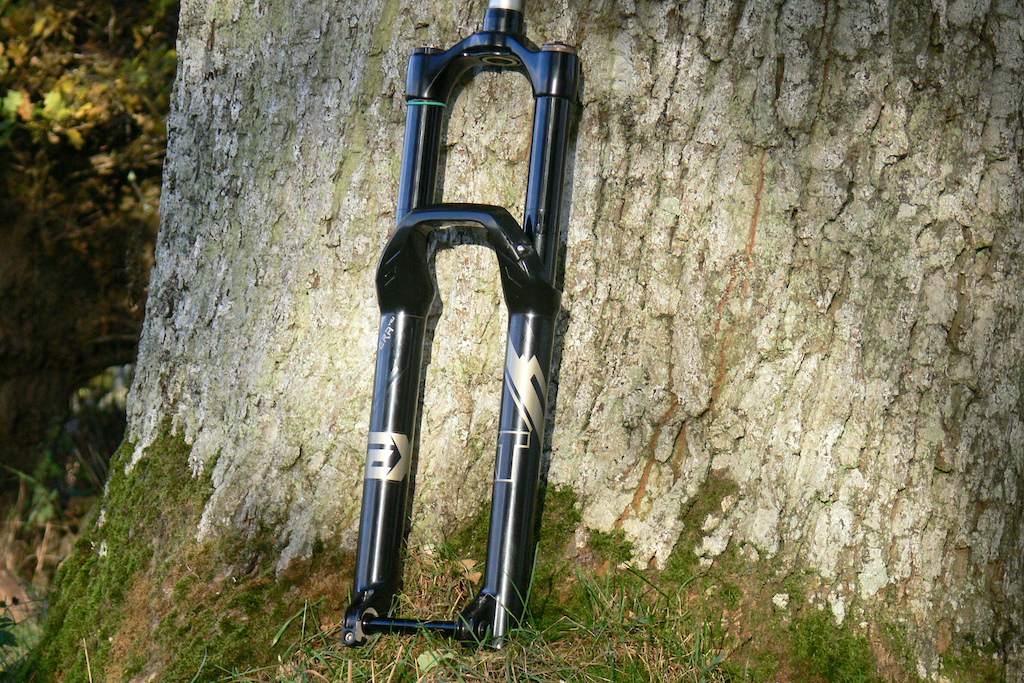
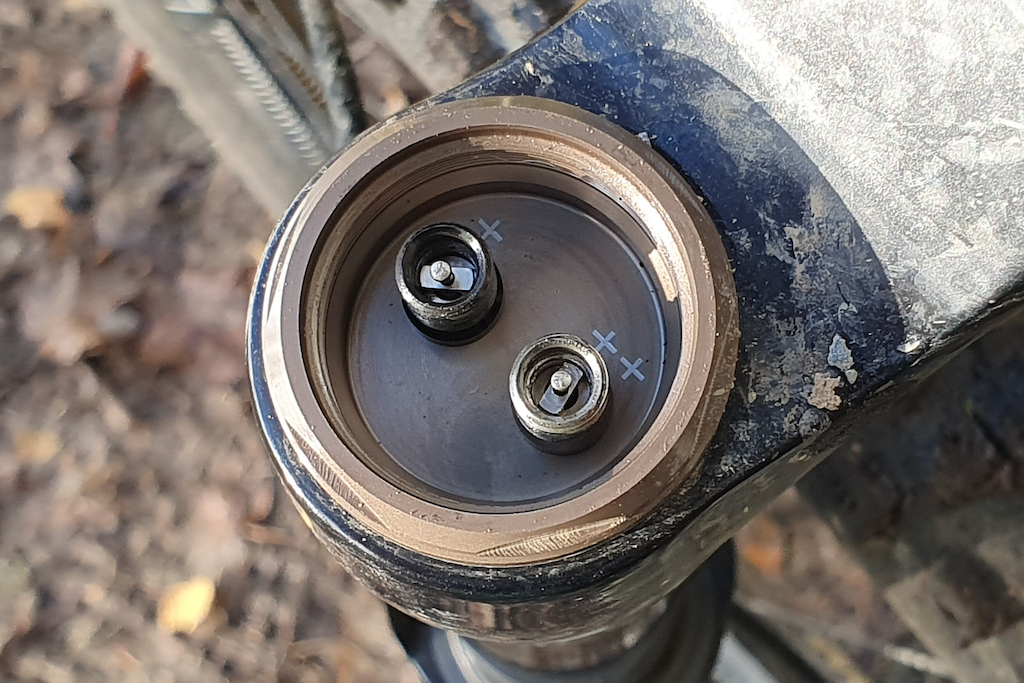
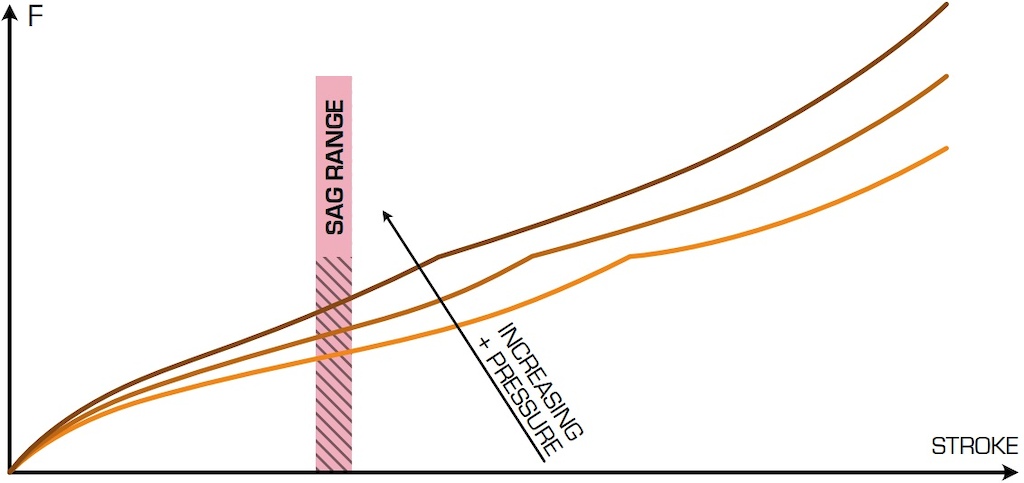
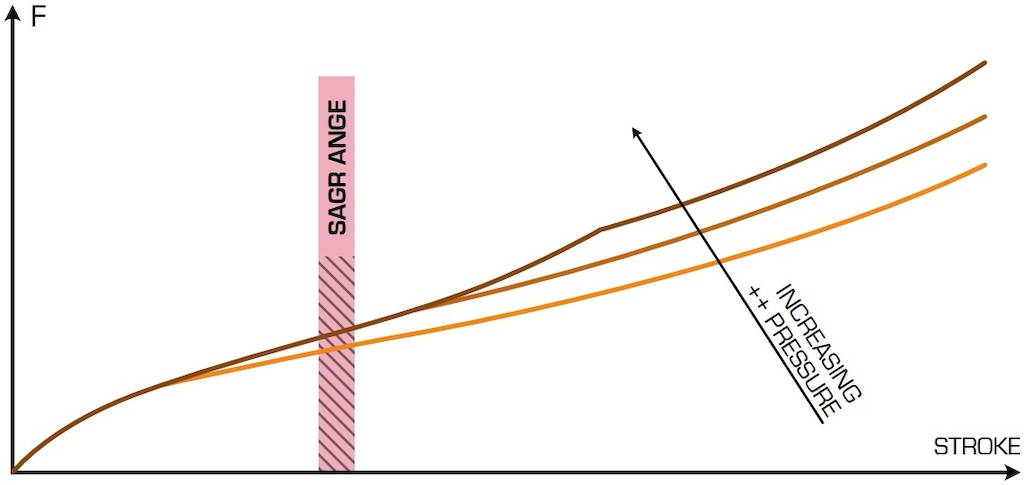


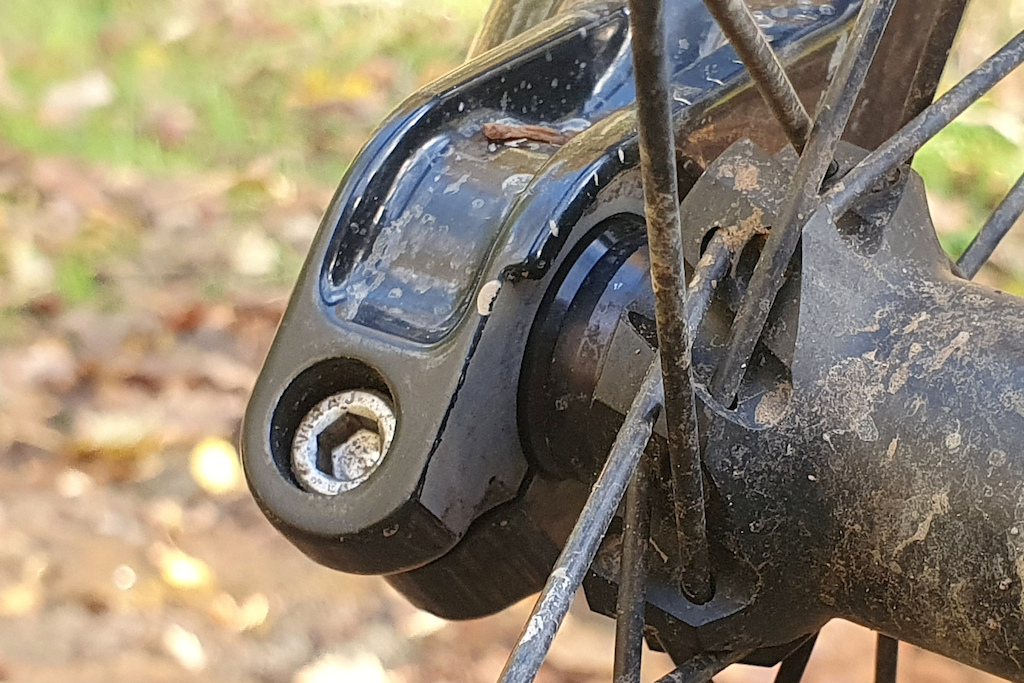
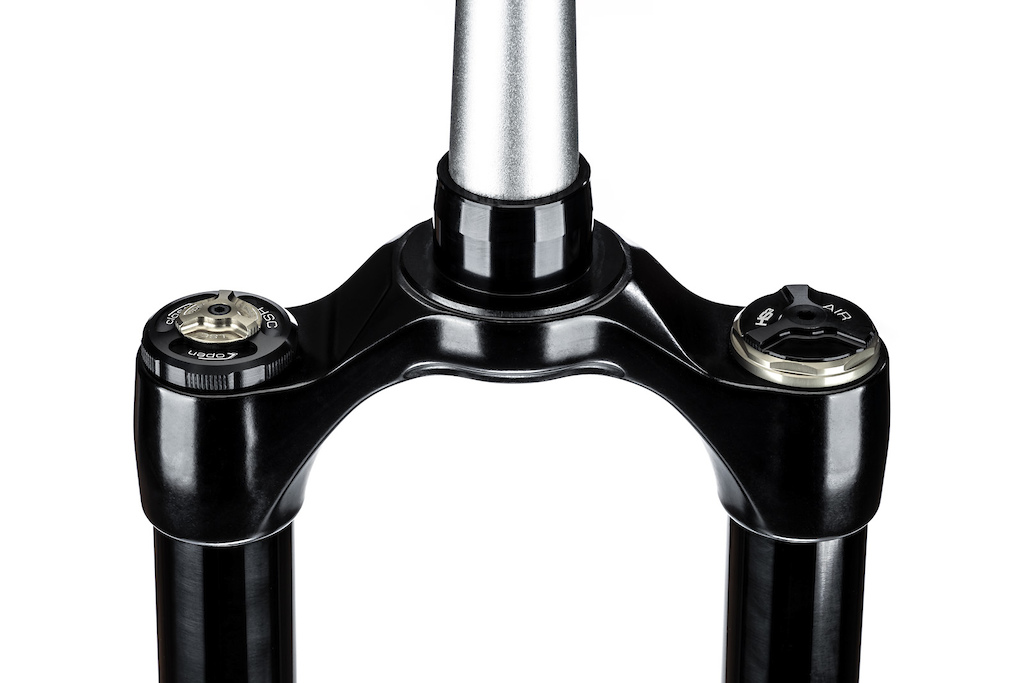

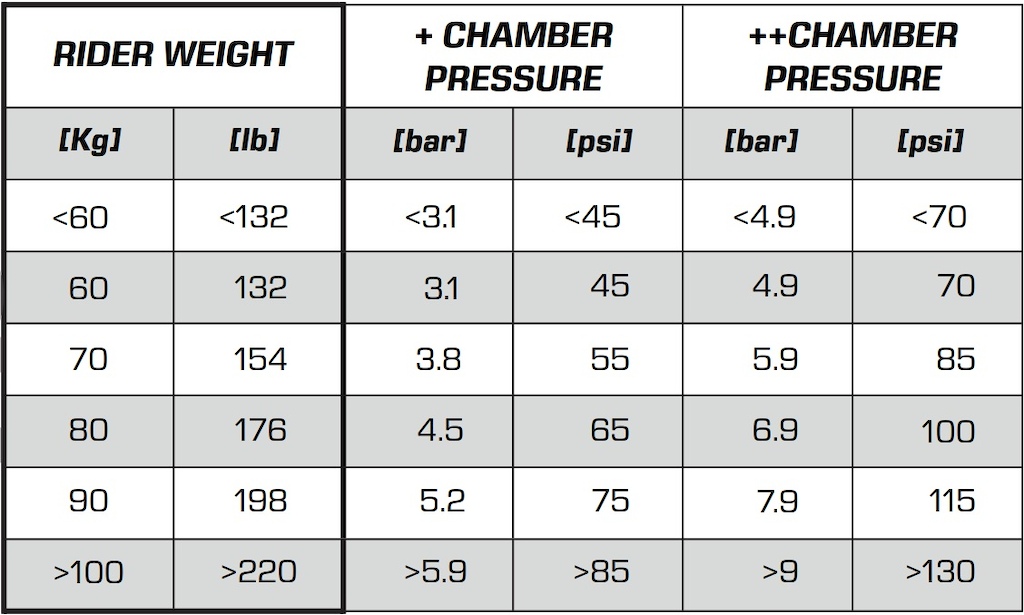

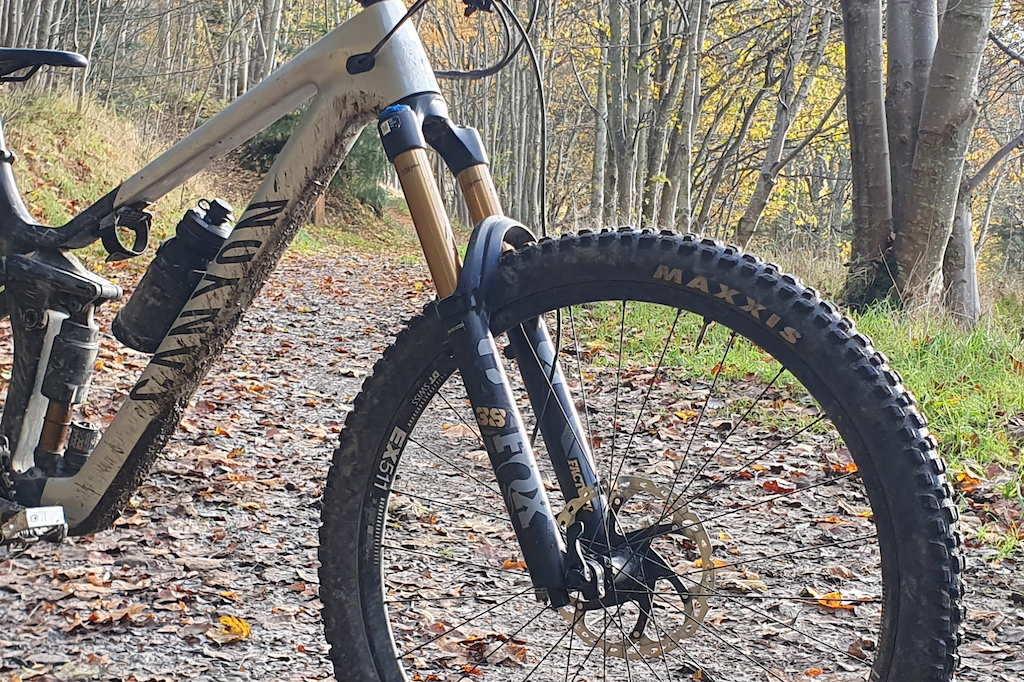

Great to use a reference product.
The forks and shocks with the biggest nose off the top have the softer mid stroke at the same ride height.
You can also buy a complete with a Fox 38 factory or performance elite relatively affordably (the cost of the complete a typically a lot less than the sum of its parts), whereas (as far as I know), there's no low-cost method of getting a bike equipped with an EXT ERA - you basically have to buy it full price aftermarket. I've never seen a complete specced with EXT.
Great review btw
They literally have no compression damping.
A shit damper evolved from a grip 1, have not filled the shoes of an rc2
Manitou at least doesnt cherrypick and Just throws a random untested fork ti the reviewers
There is a washboard section of trail I like to use to compare how well a fork can recover from repeated hits whilst remaining composed, with the EXT it was harsh, a 2023 Zeb slightly better, but the Flash smoothed it out completely. On chunky roots it never steps out of line, drops it takes in its stride and I really don't see the USD flex issues that people worry about (85kg rider pushing hard)
Likewise, the Flash stays sufficiently in its travel to never be of concern (although not quite as high as the EXT, but I also like to use the travel of my suspension, not just maintain geometry!) and takes the big hits incredibly well.
I haven't yet tried the Intend linearizer to play with the compression curve, but the standard 3 position token has worked perfectly well for me and gives a wide range of very noticeable changes based on how it is used.
What I would say, is that all of the modern crop of forks are so good now, that it really comes down to user preference in how the want a fork to feel. EXTs latest tune I'd way better than pervious ones, and yes if you are flat out racing, it's a great option, Zeb is a solid and easy to use fork, but needs a rebuild before using due to QC issues, 38 I personally don't agree is top of the pile these days, not least because the majority of people simply can't deal with the multitude of adjustments and in my experience they just don't feel as good as a Zeb and Ohlins 36 or 38 are better than ever as they have reduced the compression tunes to give a more compliant ride.
For me, until something new comes along, I'm staying on the Intend fork, not only because it suits me and feels better than everything else out there, but because it looks a whole load better than anything else too! Oh and a monkey could strip and rebuild it which is always good!!
Hope that helps :-)
Intend:-
180mm (591.5) / 170mm (581.5) / 160mm (571.5)
Zeb:-
180mm (596) / 170mm (586) / 160mm (576)
Lyrik:-
180mm (591) / 170mm (581) / 160mm (561)
Fox 38:-
180mm (593.7) / 170mm (583.7) / 160mm (573.7)
Fox 36:-
170mm (585) / 160mm (575)
Rockshox are very reasonable for the tools you need and the cost of parts.
@Thegrumpymechanic You do a clean, dust seals, gings, and oil, and new crush washers every 2-3 rides?
Some quick math I've done 181 ndes this year (2400km) thats 60 lower leg services and 15 full services. Lets go the high end lower leg every 3 rides and full service every 4 lower leg services.
Shop cost $8300 CAD
DIY Cost $3075 CAD for just parts
It's pretty clear to see where this recommendation falls apart. It's not feasible, nor necessary if your suspension is losing performance thalf way around a ride", it's not being serviced correctly.
Because this is Pinkbike where commenters think that marketing managers are making all of the calls at bike companies. From product development and engineering to sales, service, support and probably warranty too.
I get it when you consider how many bike companies are strictly marketing and distribution agencies with contracted design and manufacturing, but it's far from the standard operating procedures. Source - ex industry marketing guy
Lucky you that's a very privileged position to be able to ride that much.
However I get put 3-6 times a month, normally around that 4 figure. Which is a lot more in line with what most people manage.
That then results in a lower service ~once a month and full service every 3-4 months.
If you want to break it down into DIY costs, so far it's been about 40quid in oil. 30ish in seals. (Talking skf and maxima plush)
So, it's "pretty clear" it's a hollow argument to infer everyone does the same.
Might be worth it to take a moment to clarify what constitutes a ride, talking over ~1200m climbing/15km+ kind of thing.
Pro tip, if you've changing oil bath regular enough, you don't need new dust seals every time.
Also, I did say "I" not "everyone should", just that suggested intervals are manufacturer intervals are too long.
@jaydawg69
It's a case of reading wording on press realises, sponsored content and manuals.
You'll find some will give a range dependant on use and conditions. This is so the longer numbers can be advertised as the headline figure, but still able to cover their backs.
The reality of sliding Bush forks, as they still leave a huge amount to be desired, but atm meet the cost to make price points.
Seriously. Get the bushings fixed and you can enjoy the same maintenance intervals as everyone else.
The limitations of using a sliding bushing fork is the problem. They are inheritently high maintenance.
While it may sound like a good argument it's fundamentally flawed.
I am in no way saying there aren't sloppy/shitty bushings out there(looking at you rockshox), but bushing stiction is not the hinderance you think it is, if the fork is built to proper spec.
Why mess around with increasingly complicated air springs trying to be "more like a coil"... when you could just... use a coil... (conveniently forgetting weight penalties)
Not every coil fork is available with the correct spring rate for each rider.
Finding the right spring rate can involve a lot more effort and money.
No option to quickly adjust spring rates according to conditions. E.g. big jumps vs natural tech, full days worth of supplies in the pack, summer vs winter, swapping bikes between riders.
I would argue progressiveness is overated. It's all about the area under the spring curve graph - the energy absorbed by the spring. I certainly haven't felt the need for it on the Ohlins coil once set up right.
I do not support any brand that requires you to send in your parts for service.
Pretty dumb they don’t let you do a full fork service. That is not rocket science, but not so easy when you can’t get the custom tools.
They should really just sell service kits, the proprietary tools and put out a SRAM quality service video for the various services.
In their defense though, they think like a company that makes F1 suspension.......because they do. So, this might take awhile to get through to them. lol
Not tried to ser ice the Storia yet but I believe this is also pretty easy straight forward (though I'm led to believe the E-Storia needs a vacuum bleed).
(I have a Z1 Coil myself)
If I had a Performance or Z1 fork with the lighter lowers, yes, I'd consider the upgrade when it came time for a 150 hour service as the cost probably wouldn't be as hard to justify. The Rhythm fork is pretty heavy and there's no getting past that - I'm saving the $380 or so towards a Performance Elite or similar fork for next year instead.
And I was able to make indexing upgrade for grip without any internal modifications. You can find me on Instagram: @wytoczywiscie
Using a new Mezzer Pro, weights are coming in at 2350 grams with cost very close to that of a new Era.
Just saying...
I’d take the Hybrid every single time over the Era. Wish my old fork wasn’t a 27.5 so I could still use it. But been heavily considering selling the Era and going back to a hybrid
Open bath vs closed bath, meh. Not much of a difference performance wise to matter. Open bath dampers are easier to service, but also prone to more contamination, as well as cavitation. The other issue is that you essentially get a bigger air bottom out effect - oil level in moto forks for open bath is a tuning parameter that controls bottom out. Biggest downside is the flipping of the controls, the rebound is on the top, compression is on the bottom - generally for on the trail adjustments, you never really touch rebound, but you do fiddle with compression depending on terrain (like firming it up for steep sections so you don't fork dive on nose hits)
Air vs coil is the biggest difference, but not as much as people think. The effect depends on how fast you ride and what your preferred damper setup is. If you have a softer damper setup and ride slower where damping forces are smaller, then the coil can feel way more supple because of less seal friction and no ramp up. If you start riding faster withe a firmer damper setup, the damping become quite significant and sometimes override the actual response from the spring especially in the first part of travel. You can tune an air fork to be very supple by just changing the shim stack.
If you got money to spend, I recommend buying Formula suspension (fork and shock) where they make it really easy to swap valves with different shim stack tunes. Its the easiest way to see how much the shim stack affects the ride.
I always joke that an Avy cart costs $500 plus a conversation with Craig.
He can be a challenge but it's well worth it.
I've yet to find anything that tops my Avy Zeb w/ Smashpot conversion. Although I bought the smashpot before avy was doing the hybrid coil setups so I haven't tried it yet.
Technically an open bath and a closed bath can have identical damping curves, however the reason Avy moved away from his own closed cartridge is there are some issues with closed cartridges on mountain bikes, because the bikes are so light (compared to say an MX bike) and they don't have enough weight to sag some small spring that is in the damping rod. (this is how I recall that explanation, my apologies if I expressed this incorrectly)
I don't care so much about the 'coil suppleness' myself as I really only notice it in the parking lot and hardly feel it when charging. What I do like is the lack of stiction that a coil provides that allows a lightning fast reaction to trail obstacles.
However, there is a real problem with using an air spring and it is that spring preload (sag) and spring rate become permanently combined and you can't adjust one, without also changing the other. Need less sag to set chassis attitude? Well, it's going to cost you spring rate. Now it bottoms? Well add volume reducers. Now it lacks midrange pedaling support? Well too bad! A coil spring allows you to set the sag, with no change at all to the actual spring rate, a huge advantage.
The open bath design is simpler to manufacture, thats pretty much it. Closed damper require more seals, bladder or piston, and/or a dual chamber system.
The stiction of air seals is somewhat misleading. Generally, if you look at the breakaway force of the seal, its not that high. People often test the stiction when they are off the bike, which is not representative of riding condition at sag, where for small movements, the change in amount of force to deflect the suspension either way is much much higher than seal stiction. Bushing friction can also play a part. Some companies/shops burnish bushings in lowers for reduce friction.
All of this really just ends up a slight compression/rebound damping though. Most world cup DH riders don't really do anything for this, because its such a small amount for both. Tuning the shim stack is all thats needed. Fresh service also helps, but you can also use stanchion lube like Miles Wet Seal to aid in reducing seal and bushing friction in the intermediate.
>However, there is a real problem with using an air spring and it is that spring preload (sag) and spring rate become permanently combined and you can't adjust one, without also changing the other.
Sort of. Most air forks are limited in the sense that the transfer port is in a constant location, and you have certain volume to work with. The three chamber designs like EXT give you the ability to fine tune the curve. If you want the same spring rate but want the fork to sit higher, there is a combination of settings that can do this.
The main advantage of air is being able to run a softer setup at sag while having a firmer setup at bottom out, which you can't do with a coil spring alone. This is great for shorter travel bikes.
Those are two different things. The range of clicks is one, the ability to add support without harshness is another. Are you saying the Fox damper can't add support without adding harshness? Or just that you need more clicks to do it?
And where are the dyno charts to show that the Fox damper actually has a smaller range of compression adjustment?
"The 38 has the same damper as the 36, which at least in rebound has a great usable range, but has the same issue with the compression range being very soft, and when the air spring friction/hysteresis disappear you notice that a lot more because in most air sprung forks, the majority of the low speed compression "damping" is coming from friction and the spring, not from the damper."
If you hit a bump and it spikes and is harsh because high speed doesn't flow enough, that's overdamped, yes? If high speed flows too much such that is doesn't provide sufficient damping force and blows through travel on that bump, that's underdamped, yes? How exactly do you have both of those at once. You might have stiction from an air spring causing some harshness, but that's not the damper's fault.
V2.1 is excellent performance wise but…. At a cost
I hate that they try make them not user serviceable though. They aren’t especially complicated to service but you do need some special tools. The distributor refused to even sell me the tools so I had to machine some myself. They also hate selling spare parts.
That kind of shit can F right off, and for that reason I don’t recommend anyone buy these forks.
Now thats a good typo
Or you could just make sure to assemble the fork with the damper and spring rods fully extended and just dial in your air spring with whatever pressure is naturally present in the lower legs. If the air spring is good, you shouldn't need to add "partial vacuum*" to make it feel good.
If you insist on "fixing" an air spring's deficits with hacks, you could just always assemble the fork at very high altitude.
*(calling it "partial vacuum" is a stretch, it's just slightly lower pressure, not even close to real vacuum)
In a simplified fashion, yes, but in reality this is not so simple. Because the ++ chamber is smaller, the pressure ramps up faster in this chamber than in the + chamber, so it will be a constant state of ++ becoming higher pressure than the + chamber which will then cause + to compress against the ++ until it reaches the new higher pressure of the ++ before moving the piston between them further, thereby starting the cycle all over again...
Hence why this system is more complicated to tune than a just a simple volume spacer, but also allows a much wider tunability range.
If you don't like it, sell it, they're really easy to sell since a lot of folks are curious about adding a second positive air chamber. I won't ride without one these days.
4 full services at Jtech and Mojo. 9 lower leg services done at home by mw. A couple of internal updates done at Mojo for free.
Looking good for the next 3 years of use.
Would you get that value from RS/Fox?
that said, whats the point of the double positive air chambers if a 38 has a better spring curve anyways. a wildcard option is to pick up an old lyrik off buysell and put a bunch of push aftermarket components on it...
In other words, there is no useful difference. Reduce the overall spring rate* on the Fox, whether through bleeders or zipties or main spring, and it would likely feel the same on climbs
*(that's what the lowers "trick" is really doing: reducing spring rate of the parallel air spring in the lowers which reduces the overall rate)
Fully open on the EXT and the Fox was still faster with clicks remaining; and you're on the upper end of the spring range. That's kinda the definition of too slow.
The words in this article and the settings listed are saying it... So, if _you're_ not saying it, who is? Do you have a ghostwriter?
Wouldn't it make your fork feel skittish?
Did you read the article?
www.cambridge.org/elt/blog/2022/03/23/my-team-is-winning-or-are-they
And assuming you were the manufacturer, would you get testers that weigh cost to 300lbs to test it? Or would you go for the middle of the bell curve? I know what your marketing and development departments will tell you to do, not to mention the accounting department!
I do feel you as with many things in life I feel left out due to some medical/health issues but at some point you gotta roll with the idea you're a unique snowflake and keep on going.
But good on you for harvesting those downvotes!
To anyone reading, go google those numbers as a bodytype. You'll see exactly what I mean.
And yes, you idiot, you literally did. You started this conversation saying you wanted the bike industry to start building things specifically for people in your body range. They aren't going to do that. You're an extreme outlier.
Grow up, drop the entitlement. It's incredibly embarrassing.
How dare you recognize obesity when it slams down after a jump!
I said nothing about building, retard.
Reccomended pressures should cover more that 20lbs above the national average US male... That was clearly my point.
Now f*ck off.
There yah go champ. I suppose your other win is diabetes.
6'6" is huge. 290lbs at that height isn't.
Here I am slightly overweight at 5'11" and 179lbs. Check yourself before sounding off.
Maybe don't defend the fat guy by saying you're also fat...
Also let's try not to body shame random people in a comment section. It's just not cool.
This isn't a secret unknown body science, it's pretty well understood how these bodytypes work and look.
@ThreadedBB1day: so dude, they don't include up to 300lbs on the PSI chart as the fork isn't intended to be ridden hard under a 290lb rider. In order to get the PSI chart up there, they'd need to acknowledge the fork IS built to be ridden by a rider of that weight, which it absolutely is not.
Hence, yes, you f*cking moron, you actually are asking the bike industry to change their standards to include your bodytype. That's what I mean about semantics. Sound off less and think more.
What's shitty is repeatedly shaming a guy, who's a giant, because he'd like to be able to purchase products that will actually work for him.
At this point, you're kind of just being a dick about it.
Nobody wins arguments on the internet. Everyone just looks like a bit of an a*shole.
"as the fork isn't intended to be ridden hard under a 290lb rider. In order to get the PSI chart up there, they'd need to acknowledge the fork IS built to be ridden by a rider of that weight, which it absolutely is not." - Maximum rider weight is not mentioned anywhere in their long form service manual.
Nice speculation...
Yes, body shaming is gross. You were not body shamed, but you sure as shit were silent about it until it was pointed at you. We often call this "hypocrisy."
I assure you, some comments here are going to come off as less antagonistic and shitty than others. I'll let you try to decipher which ones.
But after you called him fat, someone else did, then you said something about diabetes, then I was somehow called fat so yes I said something.
These comments don't just populate until the page is refreshed so I apologize for being a step or two behind on calling you out for fat shaming.
Feel free to call them out as well for unprompted shaming. I'd say "you're fat" is a lot less shaming than "you're not a real man until you're in the same weight category as me." One is a word about a body type with a stigma. One is a full ass phrase designed to attack others and make them feel lesser than.
Just let it go, dude. Everyone took the L today.
But I never said you couldn't be overweight and beautiful!